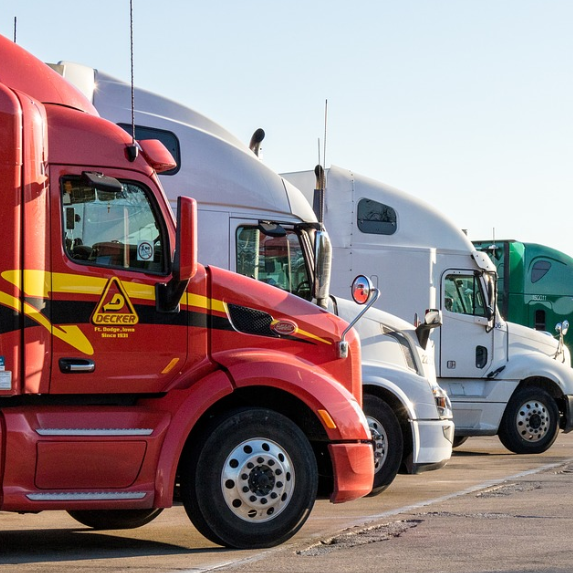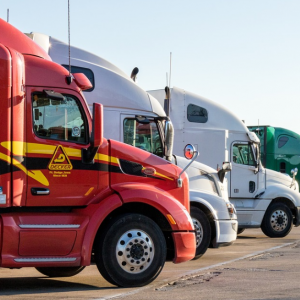
by logisticsplus | Jul 16, 2018 | News
As a certified Great Place to Work®, we have some of the best employees in the industry. One of those employees is Mike Callan, an international logistics specialist who works from the Logistics Plus Global Headquarters in Erie, PA. For those who don’t know, Mike was also the emcee and a stand-up comic for the First Annual LP Talent Show back in April.
This is the first in a series of new “Employee Spotlight” interviews over the coming weeks and months that will showcase many of our diverse employees from around the world. We hope you enjoy getting to know a little more about us and the “people who power the plus” at Logistics Plus.
PS: Special thank you to Mike Callan for volunteering to help us kick off this new interview series, and to Ryan Markiewicz who helped conduct the first interview and edit the final video! ![?]()

by logisticsplus | Jul 12, 2018 | News
 Global Trade Alert Message:
Global Trade Alert Message:
On July 10th, 2018 the Trump Administration announced a list of tariffs on $200 billion worth of Chinese goods. Before these tariffs may go into effect, they must first undergo a two-month review process. (CNBC)
To view the latest list of proposed tariff increases, click here.

by logisticsplus | Jul 9, 2018 | News
 Less than truckload (LTL) shipping involves the transportation of relatively small freight shipments that can weigh anywhere between 150 to 10,000 pounds. LTL carriers collect freight from multiple shippers and consolidate that freight onto trailers before the delivery process begins. LTL shipments can be very confusing, because unlike Full Truck Load (FTL) shipments, LTL shipping rates are calculated from several varying factors. Knowing the factors that impact LTL shipping rates is helpful for creating more realistic rate expectations and increasing long-term savings. Here are the factors:
Less than truckload (LTL) shipping involves the transportation of relatively small freight shipments that can weigh anywhere between 150 to 10,000 pounds. LTL carriers collect freight from multiple shippers and consolidate that freight onto trailers before the delivery process begins. LTL shipments can be very confusing, because unlike Full Truck Load (FTL) shipments, LTL shipping rates are calculated from several varying factors. Knowing the factors that impact LTL shipping rates is helpful for creating more realistic rate expectations and increasing long-term savings. Here are the factors:
Weight & Density
Weight and density are the two most basic aspects of how LTL shipping rates are calculated. Typically, freight companies rate shipments at the lowest weight and category, meaning that the more a shipment weighs, the less it costs per hundred pounds. Furthermore, be sure to measure the longest sides of all packaging, including anything that overhangs. To determine the density of your shipment, the total weight of your shipment is divided by the total cubic feet. Logistics Plus offers a free, online freight density calculator to quickly determine the density of any shipment.
Freight Classification
Once density is calculated, you can now determine the proper freight classification. The National Motor Freight Traffic Association (NMFTA) established “freight classes” that are used to classify commodities for rating purposes. Classifications are based on a products density, stow-ability, value, handling and liability. Each commodity is categorized into one of 18 different freight classifications that range from 50 to 500. Generally, the lower the freight class, the more dense the commodity. Conversely, a higher freight classification represents a less dense product that typically takes up more space. As a general rule of thumb, the higher the freight class, the higher the rate will be. You can read more about freight classification on the Logistics Plus website.
Base Rates & Discounts
Every LTL carrier establishes their own base rates upon which they normally offer discounts. Base rates are typically quoted per 100 pounds, but can vary by company or by lane. One thing to make note of is that carriers will change their base rate depending on their need for additional volume and increased costs for lanes where they have a good balance between trucks and freight. It’s difficult to create an accurate comparison of LTL shipping rates just by looking at base prices or discounts because they’re almost always different. A lower discount off a lower base rate can actually be a better deal than a higher discount off a higher base rate. Logistics Plus can offer you a free freight analysis if you want to compare rates.
Minimum Charges
The absolute minimum charges refers to the minimum price a carrier will offer, and they will not go lower no matter the circumstances. In this case, even when discounts are negotiated, the absolute minimum charge still holds true. This minimum charge helps ensure that carriers cover all of their fixed costs for a specific shipment or lane. Understanding your carriers absolute minimum charge is an important factor to research, especially if you’re shipments are small and moving across short distances.
Origin & Destination
A shipment that needs to travel a further distance will tend to have higher rates than a short distance shipment. Shippers should be aware of which carriers serve their intended destination so that they can avoid additional charges or fees. It’s important to choose the correct carrier because if your shipment needs to be transferred to another LTL carrier, costs will rise and the goods will be more susceptible to damages.
Surcharges & Accessorial Fees
Accessorial fees apply when additional services are required to handle your shipment. These fees apply when the typical dock-to-dock pickup and delivery service most LTL carriers provide isn’t enough. Common examples of accessorial services include lift-gates, weekend deliveries, and pickup or delivery at special origins or destinations. Fuel surcharges are also a common accessorial fee that LTL carriers charge. Knowing how these additional fees impact your overall expenses is important when determining who you want to work with as your LTL carrier.
If you feel like you’re over-spending on LTL freight, or if you lack the expertise to negotiate your own rates, please consider working with Logistics Plus. As a top freight brokerage firm, our LTL experts help hundreds of companies save on their LTL shipping every day. Logistics Plus will ensure you get a quick and accurate LTL freight quote for any shipment.



by logisticsplus | Jul 9, 2018 | News
Ankush Rajurkar, COO for Logistics Plus India, recently presented at the Chief Operating Officer Summit & Awards 2018 event in Mumbai. Ankush’s presentation at the COO summit was titled “Business is all about Managing Stakeholders” and a copy of his presentation slides are available here. In his presentation, Ankush noted that business is all about meeting the expectations of multiple stakeholders. Business leaders need to learn techniques for identifying stakeholders, analyzing their influence on a company’s business, and developing strategies to communicate, set boundaries, and manage competing expectations. The presentation included a Logistics Plus 4PL case study that incorporated many of these ideas.


by logisticsplus | Jul 2, 2018 | News
 Less than truckload (LTL) shipping can be expensive and difficult if it’s not done efficiently. It’s important to understand the different ways you can save on LTL shipping in order to better manage your transportation expenses and maintain good relationships with your carriers. Here are four (4) tips to become more efficient and cost-effective with LTL shipping:
Less than truckload (LTL) shipping can be expensive and difficult if it’s not done efficiently. It’s important to understand the different ways you can save on LTL shipping in order to better manage your transportation expenses and maintain good relationships with your carriers. Here are four (4) tips to become more efficient and cost-effective with LTL shipping:
- Use Proper Packaging
- If a shipment is not properly packaged, you might be paying for extra shipping space you don’t really need. Also, an improperly packed shipment increases the risk of damages that may occur with the handling of your product. Its always important to recognize, and plan for, the things can go wrong, such as someone dropping your package. Furthermore, if you have a well-packaged shipment that is difficult to damage, it may save you the time of filing a tedious freight claim.
- Consolidate Units When Possible
- It is much easier for a carrier to handle one pallet that contains multiple units rather than handling a bunch of individual units. Not only does it make it easier for shipping purposes, but having one pallet with multiple units greatly decreases the risk of damages compared to shipping individual items.
- Always Report Accurate Shipping Weights and Dimemsions
- Always accurately state the weight and dimensions of your shipment whenever you have an LTL shipment. Although the shippers are responsible for correctly stating the weight, most carriers re-weigh all shipments. If the weight isn’t stated correctly, it can lead to additional charges that ramps up costs and decreases efficiency.
- Ensure Your Bill Of Lading Is Correct
- More LTL carriers are enforcing bill of lading accuracy. Many carriers even require the proper freight classification and NMFC item number. An inaccurate bill of lading can cause issues for carriers, straining the shipper and carrier relationship. A great way to increase bill of lading accuracy is to implement a transportation management system (TMS) that uses automation features to decrease the amount of errors made.
Less than truckload shipping doesn’t have to be such a difficult task. Following these tips will not only save you money, it will increase your efficiency. To find out how you can save on LTL shipping, contact Logistics Plus today for assistance. Our team of LTL experts will quickly show you how we put the “plus” in Logistics Plus.



by logisticsplus | Jun 29, 2018 | News
 Through its partnership with Erie Times-News and GoErie.com, Logistics Plus is being featured, once again, in the current (June) issue of the publisher’s Lake Erie Lifestyles magazine. This new segment discusses technology changes at Logistic Plus and how technology is playing an even bigger role in the solutions it provides. A reprint of the feature, which is shown below, is also available online at www.goerie.com/lifestyle/lake-erie-lifestyle. You can also read the full interview online with Emile Zafirov, CIO for Logistics Plus.
Through its partnership with Erie Times-News and GoErie.com, Logistics Plus is being featured, once again, in the current (June) issue of the publisher’s Lake Erie Lifestyles magazine. This new segment discusses technology changes at Logistic Plus and how technology is playing an even bigger role in the solutions it provides. A reprint of the feature, which is shown below, is also available online at www.goerie.com/lifestyle/lake-erie-lifestyle. You can also read the full interview online with Emile Zafirov, CIO for Logistics Plus.
You can click the image below to see a PDF version.





 Less than truckload (LTL) shipping involves the transportation of relatively small freight shipments that can weigh anywhere between 150 to 10,000 pounds. LTL carriers collect freight from multiple shippers and consolidate that freight onto trailers before the delivery process begins.
Less than truckload (LTL) shipping involves the transportation of relatively small freight shipments that can weigh anywhere between 150 to 10,000 pounds. LTL carriers collect freight from multiple shippers and consolidate that freight onto trailers before the delivery process begins. 



 Less than truckload (LTL) shipping can be expensive and difficult if it’s not done efficiently. It’s important to understand the different ways you can save on
Less than truckload (LTL) shipping can be expensive and difficult if it’s not done efficiently. It’s important to understand the different ways you can save on 


